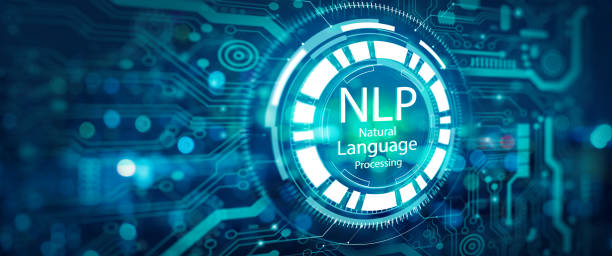Demystifying Human Language: A Dive into Natural Language Processing (NLP)
The ability to understand and communicate using language is what sets humans apart from most other species. But what if computers could grasp the nuances of human language? This is the realm of Natural Language Processing (NLP), a fascinating field of artificial intelligence (AI) that bridges the gap between human communication and machine comprehension.
This article delves deep into the world of NLP, exploring its core concepts, applications, the challenges it faces, and its exciting future potential.
What is Natural Language Processing?
Natural language processing refers to the branch of AI that equips computers with the ability to understand, process, and generate human language. This includes:
- Understanding the meaning: NLP tasks involve analyzing the grammatical structure, syntax, and semantics of language to extract meaning from text and speech.
- Generating human-like text: NLP applications can be used to generate different creative text formats, like poems, code, scripts, musical pieces, emails, and even translate languages.
- Interacting with humans: NLP is crucial for developing chatbots, virtual assistants like Siri or Alexa, and other interactive systems that can understand and respond to human language input.
Core Techniques in NLP
NLP leverages a combination of techniques to achieve its goals. Here's a glimpse into some key approaches:
- Machine Learning: Supervised and unsupervised machine learning algorithms are trained on massive datasets of text and speech data. These algorithms learn to identify patterns in language and perform tasks like sentiment analysis, speech recognition, and machine translation.
- Deep Learning: Deep learning architectures, particularly recurrent neural networks (RNNs) and transformers, have revolutionized NLP in recent years. These models excel at capturing long-range dependencies in language and understanding complex relationships between words.
- Natural Language Understanding (NLU): This subfield focuses on tasks like named entity recognition (identifying people, places, organizations in text), text summarization, and question answering systems.
- Natural Language Generation (NLG): This subfield focuses on generating different forms of human-quality text, like creating chatbots that can engage in conversations, summarizing factual topics, or writing different kinds of creative content.
Applications of NLP: Transforming Industries
NLP is transforming various industries with its powerful capabilities:
- Search Engines: Search engine algorithms leverage NLP to understand user queries more effectively, ranking relevant search results and providing a more intuitive search experience.
- Social Media Analysis: NLP is used to analyze social media sentiment, identifying trends, gauging public opinion on brands or products, and filtering out offensive content.
- Machine Translation: NLP empowers machine translation tools like Google Translate to bridge the communication gap between languages, continuously improving accuracy and fluency.
- Chatbots and Virtual Assistants: NLP is the backbone of chatbots and virtual assistants, enabling them to understand user requests, provide information, and complete tasks in a conversational manner.
- Customer Service: NLP is used to automate customer service interactions through chatbots that can answer frequently asked questions, resolve basic issues, and improve customer satisfaction.
- Content Creation: NLP is used for automatic content generation, creating product descriptions, marketing copy, and even different creative text formats like poems or scripts.
- Cybersecurity: NLP helps detect spam emails, identify phishing attempts, and analyze online threats by understanding the language patterns used by malicious actors.
- Healthcare: NLP is used to analyze medical records, identify potential health risks from patient data, and even assist doctors in diagnosis and treatment planning.
Challenges and the Road Ahead
Despite significant progress, NLP still faces challenges:
- Understanding Context: Language comprehension relies heavily on context. NLP models still struggle to fully grasp the nuances of sarcasm, humor, and cultural references within language.
- Ambiguity and Polysemy: Words often have multiple meanings depending on the context. NLP models require continuous improvement in handling ambiguity and resolving polysemy (multiple meanings of one word).
- Unstructured Data: A significant portion of human language data is unstructured, such as social media posts or conversational speech. NLP models require advancements to effectively process and analyze such data.
- Bias and Fairness: NLP models trained on biased data can perpetuate those biases in their outputs. Addressing bias and ensuring fairness in NLP systems is crucial.
The Future of NLP: A World Where Machines Speak Our Language
NLP research is constantly evolving, with exciting possibilities on the horizon:
- Improved Human-Computer Interaction: NLP advancements will lead to more natural and intuitive interactions between humans and machines. Imagine voice-controlled interfaces that understand complex instructions or chatbots that can engage in meaningful conversations.
- Personalized Language Learning: NLP can personalize language learning experiences, tailoring instruction and content to individual strengths and weaknesses. This could revolutionize language education, making it more efficient and engaging.
- Accessibility Tools: NLP can power assistive technologies for people with disabilities. Speech recognition and text-to-speech conversion can improve communication and information access for those with speech or vision impairments.
- Enhanced Creativity: NLP can be used to analyze vast amounts of creative text data, identifying patterns and inspiring new forms of creative expression. This could be used to create new artistic styles, write different kinds of creative content, or even help with songwriting or scriptwriting.
- Multilingual Communication: NLP advancements can lead to seamless, real-time translation, breaking down language barriers and fostering greater global communication and collaboration. Imagine a world where language is no longer an obstacle to understanding or cooperation.
Conclusion: The Power of Language, Unleashed
Natural Language Processing is revolutionizing the way we interact with machines and the world around us. By unlocking the power of human language for computers, NLP opens doors to a future of more intuitive technology, personalized experiences, and enhanced communication across languages and cultures. As NLP continues to evolve, the possibilities are truly limitless.
Here are some additional points to consider:
- The Importance of Responsible NLP: As NLP becomes more powerful, ethical considerations become paramount. Ensuring fairness, mitigating bias, and promoting transparency in NLP development and deployment are crucial aspects of responsible AI practices.
- The Human-Machine Partnership: NLP should not be seen as a replacement for human communication, but rather as a tool to augment our abilities. As machines become better at understanding language, humans can focus on higher-level tasks that require creativity, empathy, and critical thinking.
The journey towards a future where machines understand and speak our language is well underway. By embracing the power of NLP responsibly, we can create a world where technology empowers us to communicate, collaborate, and express ourselves in new and exciting ways.














































































